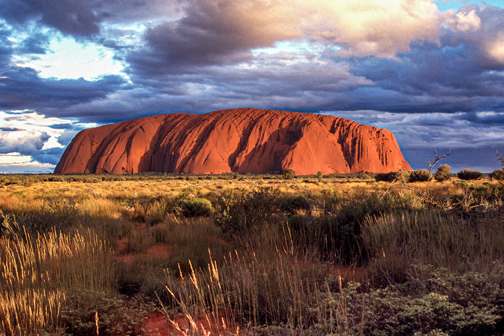
Exploratory drive, cattle grid and fences

Day: 43
Heart Camp – 23.06.2000
As today is my interview day, we can only leave tomorrow. I use the time between calls to weigh the load with our hand scales and place all the equipment next to the respective saddle frames. Petro drove 140 kilometers north to Paynes Find to find out if there is a possibility to weld our saddles there. Although we are sure that the saddles are functional, it is still good to have another option for converting the ‘L-frames’ in an emergency. Petro doesn’t return from his reconnaissance trip until 9 pm. “I have good news,” he says, beaming all over his face as he steps up to the flickering campfire. “The new owners or tenants of the Roadhaus in Paynes Find are very nice people. If anything goes wrong with the new saddles, you can even use the workshop free of charge. The people there are more than helpful and happy to help you.”
We are relieved to hear the good news, because with every kilometer we get further and further away from Goomalling. For Jo and Tom, helping us is becoming more and more time-consuming. Apart from that, hopefully we have now reached the point where we can stand on our own two feet. At some point, the annoying saddle story has to come to an end. I’m sipping my hot cup of tea when Petro spoils our joy a little with another piece of news. “Well, on the way from here to Paynes Find there are still fences to the left and right of the road. It still won’t be easy for you to find a good camping spot. I also spotted at least 10 of the dangerous cattle grids stretching from one fence to another and across the entire road.” “What?” I shout, snorting and choking on my tea.
At this point I need to explain what these cattle grids are all about: They are long, usually round pipes, rails or beams that are dug into the ground next to each other so that they are level with the roads, paths or rails that the animals are not supposed to cross. To prevent cattle, sheep or other livestock from running over it, there is a small gap between one pipe and the other. Any animal that walks over it can easily break its legs, making these cattle grids an effective solution for stopping entire herds of cattle. Even with our camels we have no chance of crossing these cattle grids. The probability of a camel slipping with one foot into such a grid gap and breaking a foot is very high. We had already been warned about these grids during the preparation for the expedition, but I hadn’t expected to be confronted with this problem now. Once again, my dream of finally reaching open station land is gone. We have been following the railroad tracks and fences for the last 280 kilometers and now the situation is to remain unchanged.
We are not yet sure how to get around these grids. It would be possible to go with our caravan through one of the gates that allow access to the fence next to the road. It is important to follow the ironclad and very understandable rule in the Australian bush of leaving all gates as you find them. This means that if a gate is closed, you close it again after you have passed through it and if it is open, you leave it open. Apart from that, we unfortunately do not know whether there is another gate at the end of such huge farms to be able to leave the fenced-in land again. In an emergency, we would then have to walk the whole way back or follow the fence until we find a gate to freedom. Cutting through the fence would also be an option, but only if our lives were in danger from a bushfire and we had no choice but to flee through the fence. So if we really have to cut through a fence, that would mean restoring it to its original state afterwards. So we need the right tools, enough wire and plenty of time. In general, no farmer likes to see his fence cut. There is a high risk that the fence will not be restored to its original condition and a whole herd of sheep or cattle may break out, with catastrophic consequences for the owner and, of course, for the person who cut the fence. The easiest way around a fence problem is to dig out two or three posts to lay the fence flat over a long length. We could walk over the fence lying on the ground with our caravan without any danger and would then only have to put the posts back up and dig them in. In this way, there is no difficulty in losing the important tension of the fencing and nobody is harmed. However, we will only be able to make the hopefully correct decision once we are there.

